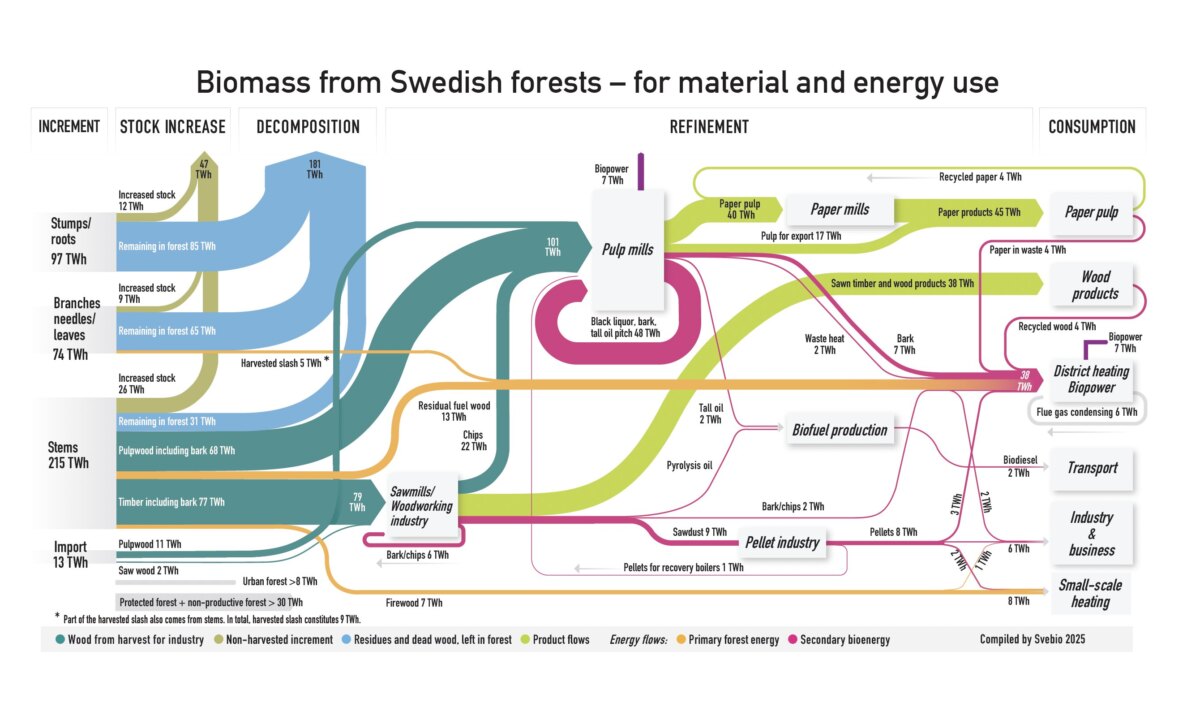Forest Biomass Flows Affected by Exceptional Events
In June 2025, Bioenergi published an article by Kjell Andersson and Bo Hektor, analyzing the updated flowchart of Sweden’s forest-bioenergy system based on 2022 data. The update follows the original 2019 version, which was based on 2015 statistics and published in collaboration with IRENA.
Exceptional Years Around 2020
The years around 2020 were marked by multiple disruptions: drought in 2018, massive bark beetle outbreaks, COVID-19 trade disturbances, and the 2022 war in Ukraine halting timber imports from Russia and Belarus. These events have impacted forest growth, harvesting levels, and market conditions.
Key Findings
- Significant volumes of harvest residues and small-diameter wood remain unused in forests, contributing to CO₂ emissions.
- The flow of biomass is increasingly diversified, with more applications in industrial and commercial heating, biofuels, and biochar.
- There has been growth in the use of pellets in industrial applications outside the forest sector, although small-scale use has declined.
- Pulp mills show increased internal energy use and bio-power generation, with a large untapped potential in black liquor gasification and residual heat recovery.
Additions to the 2025 Flowchart
- A new category for forest residues left in the forest.
- Expanded biofuel production, including tall oil diesel and pyrolysis oil.
- Bioenergy use from post-consumer wood, paper waste, and sewage sludge.
- New industrial sectors using pellets and chips (e.g., food industry, greenhouses).
Limits of the Diagram
- The diagram represents one year (2022) and not trends over time.
- It excludes biomass from agriculture, waste not related to forestry, and imports/exports.
- It shows net change in forest biomass stocks, not total biomass volume (approx. 2,500 million tons dry matter ≈ 12,500 TWh).
Outlook
Future diagrams are expected to show increasing flows into biofuel production. However, supply will depend on forest growth, available residues, and climate policy decisions. Increased use of currently untapped biomass sources such as stumps and residual heat may further enhance the contribution of forest bioenergy.
Source: Bioenergi Magazine (www.bioenergitidningen.se), June 2025 – Authors: Kjell Andersson and Bo Hektor
Read more in swedish.
